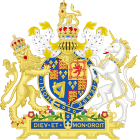
The Worshipful Company of Fishmongers is one of the 111 Livery Companies of the City of London, being an incorporated guild of sellers of fish and seafood in the City. The Company ranks fourth in the order of precedence of City Livery Companies, thereby making it one of the Great Twelve City Livery Companies.

The Lord Mayor's Show is one of the best-known annual events in London as well as one of the longest-established, dating back to the 13th century. A new lord mayor is appointed every year, and the public parade that takes place as their inauguration ceremony reflects that this was once one of the most prominent offices in England and subsequently the United Kingdom.

Swan upping is an annual ceremony in England in which mute swans on the River Thames are rounded up, caught, ringed, and then released.
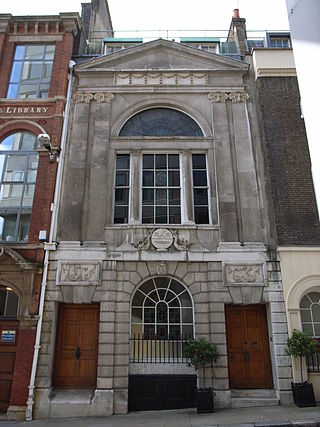
A lighterman is a worker who operates a lighter, a type of flat-bottomed barge, which may be powered or unpowered. In the latter case, it is usually moved by a powered tug. The term is particularly associated with the highly skilled men who operated the unpowered lighters moved by oar and water currents in the Port of London.

Thomas Doggett was an Irish actor. The birth date of 1640 seems unlikely. A more probable date of 1670 is given in the Encyclopædia Britannica.

A Thames sailing barge is a type of commercial sailing boat once common on the River Thames in London. The flat-bottomed barges, with a shallow draught and leeboards, were perfectly adapted to the Thames Estuary, with its shallow waters and narrow tributary rivers. The larger barges were seaworthy vessels, and were the largest sailing vessel to be handled by just two men. The average size was about 120 tons and they carried 4,200 square feet (390 m2) of canvas sail in six working sails. The mainsail was loose-footed and set up with a sprit, and was brailed to the mast when not needed. It is sheeted to a horse, as is the foresail; they require no attention when tacking. The foresail is often held back by the mate to help the vessel come about more swiftly.

Doggett's Coat and Badge is the prize and name for the oldest continuous rowing race in the world. Up to six apprentice watermen of the River Thames in England compete for this prestigious honour, which has been held every year since 1715. The 4 mile 5 furlongs race is rowed on the River Thames upstream from London Bridge to Cadogan Pier, Chelsea, passing under a total of eleven bridges. Originally, it was raced every 1 August against the outgoing tide, in the boats used by watermen to ferry passengers across the Thames. Today it is raced at a time amenable to spectators, in September, that coincides with the incoming tide, in contemporary single sculling boats.
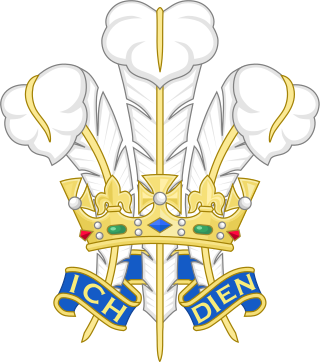
A heraldic badge, emblem, impresa, device, or personal device worn as a badge indicates allegiance to, or the property of, an individual, family or corporate body. Medieval forms are usually called a livery badge, and also a cognizance. They are para-heraldic, not necessarily using elements from the coat of arms of the person or family they represent, though many do, often taking the crest or supporters. Their use is more flexible than that of arms proper.

A waterman is a river worker who transfers passengers across and along city centre rivers and estuaries in the United Kingdom and its colonies. Most notable are those on the River Thames and River Medway in England, but other rivers such as the River Tyne and River Dee, Wales, also had their watermen who formed guilds in medieval times. Waterman can also be a person who navigates a boat carrying passengers. These boats were often rowing boat or boats with sails. Over the years watermen acquired additional skills such as local pilotage, mooring vessels at berths, jetties, buoys, and docks, and acting as helmsman aboard large vessel.
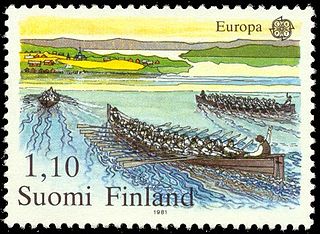
The history of rowing as a sport has prevailed it as one of the oldest traditions in the world. What began as a method of transport and warfare eventually became a sport with a wide following, and a part of the cultural identity of the English speaking world. Rowing in its modern form developed in England in the 1700s.
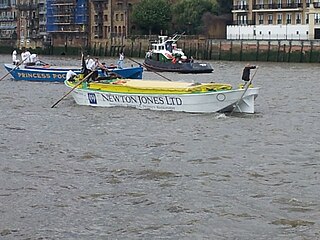
The Thames Barge Driving Race or Barge Race is a river-race that was set up in 1975 by a charity called The Transport On Water Association (TOW), founder members being Jack Faram, Jonnie McSweeney, Ron Livett, Don Able and Peter House, now known as the Thames Barge Driving Trust with the backing of Members of Parliament and Members of the House of Lords in the United Kingdom.
Kenneth Victor Dwan is a British former rower who competed in the Olympic Games in 1968 and 1972 and won the Wingfield Sculls six times.

James Arthur Messenger was a British sculler who was the world champion from 1854 to 1857. He served as the Queen's Bargemaster from 1862 to 1901. He resided in Teddington. In 1854 he became the Champion of the Thames which was effectively the English Sculling Championship and the World Sculling Championship. The English title gained the world status in 1876, earlier winners were retrospectively given the world champion title. In 1862 he won the famed Doggett's Coat and Badge, which claims to be the oldest sporting championship in the world. There is some confusion as to whether James Messenger who won the World Sculling Championship in 1854 is the same person, recorded as John Messenger of Cherry Garden Stairs, who won the Doggett's Coat and Badge in 1862.
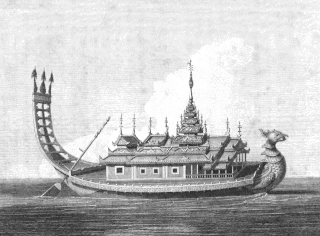
A royal barge is a ceremonial barge that is used by a monarch for processions and transport on a body of water.

The Thames Diamond Jubilee Pageant was a parade on 3 June 2012 of 670 boats on the Tideway of the River Thames in London as part of the celebrations of the Diamond Jubilee of Elizabeth II. The Queen, Prince Philip and other members of the Royal Family were aboard vessels that took part in the parade. The parade was organised by the Thames Diamond Jubilee Foundation, and funded by private donations and sponsorship. The pageant master was Adrian Evans.
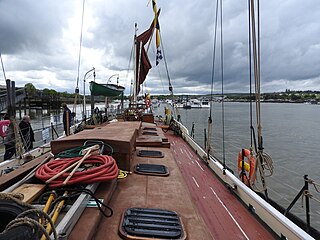
Kitty is a wooden Thames sailing barge in the bowsprit class of 65 tons. She was built in Harwich in 1895. She is No. 209 on the National Historic Ships Register.
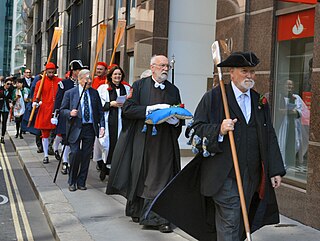
The Knollys Rose Ceremony is an annual event led by the Company of Watermen and Lightermen. The ceremony dates to 1381 and is held each year in June. A single red rose is snipped from the garden in Seething Lane, placed on an altar cushion from All Hallows-by-the-Tower and carried in procession west to the Mansion House where it is presented to the Lord Mayor of London.
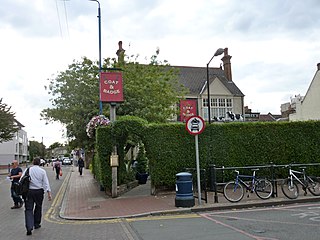
The Coat & Badge is a pub in Putney, London, England.


